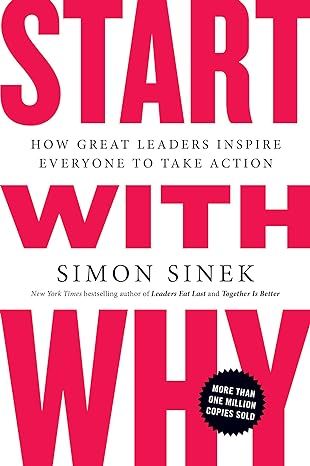Start with Why: How Great Leaders Inspire Everyone to Take Action
4.6
-
37,152 ratings
The inspirational bestseller that ignited a movement and asked us to find our WHY
Discover the book that is captivating millions on TikTok and that served as the basis for one of the most popular TED Talks of all time—with more than 56 million views and counting. Over a decade ago, Simon Sinek started a movement that inspired millions to demand purpose at work, to ask what was the WHY of their organization. Since then, millions have been touched by the power of his ideas, and these ideas remain as relevant and timely as ever.
START WITH WHY asks (and answers) the questions: why are some people and organizations more innovative, more influential, and more profitable than others? Why do some command greater loyalty from customers and employees alike? Even among the successful, why are so few able to repeat their success over and over?
People like Martin Luther King Jr., Steve Jobs, and the Wright Brothers had little in common, but they all started with WHY. They realized that people won't truly buy into a product, service, movement, or idea until they understand the WHY behind it.
START WITH WHY shows that the leaders who have had the greatest influence in the world all think, act and communicate the same way—and it's the opposite of what everyone else does. Sinek calls this powerful idea The Golden Circle, and it provides a framework upon which organizations can be built, movements can be led, and people can be inspired. And it all starts with WHY.
Kindle
$12.99
Available instantly
Audiobook
$0.00
with membership trial
Hardcover
$15.26
Paperback
$9.99
Ships from
Amazon.com
Payment
Secure transaction
ISBN-10
1591846447
ISBN-13
978-1591846444
Print length
256 pages
Language
English
Publisher
Portfolio
Publication date
December 26, 2011
Dimensions
5.28 x 0.64 x 7.97 inches
Item weight
7.8 ounces
Popular Highlights in this book
There are only two ways to influence human behavior: you can manipulate it or you can inspire it.
Highlighted by 22,662 Kindle readers
It’s worth repeating: people don’t buy WHAT you do, they buy WHY you do it.
Highlighted by 18,711 Kindle readers
Great companies don’t hire skilled people and motivate them, they hire already motivated people and inspire them.
Highlighted by 17,233 Kindle readers
Product details
ASIN :
B002Q6XUE4
File size :
3532 KB
Text-to-speech :
Enabled
Screen reader :
Supported
Enhanced typesetting :
Enabled
X-Ray :
Enabled
Word wise :
Enabled
Editorial Reviews
“Start with Why is one of the most useful and powerful books I have read in years. Simple and elegant, it shows us how leaders should lead.” -WILLIAM URY, coauthor of Getting to Yes
“Start with Why fanned the flames inside me. This book can lead you to levels of excellence you never considered attainable.” -GENERAL CHUCK HORNER, air boss, Desert Storm
“Each story will force you to see things from an entirely different perspective. A perspective that is nothing short of the truth.” -MOKHTAR LAMANI, former ambassador, special envoy to Iraq
Sample
1
ASSUME YOU KNOW
On a cold January day, a forty-three-year-old man was sworn in as the chief executive of his country. By his side stood his predecessor, a famous general who, fifteen years earlier, had commanded his nation’s armed forces in a war that resulted in the defeat of Germany. The young leader was raised in the Roman Catholic faith. He spent the next fi ve hours watching parades in his honor and stayed up celebrating until three o’clock in the morning. You know who I’m describing, right?
It’s January 30, 1933, and I’m describing Adolf Hitler and not, as most people would assume, John F. Kennedy. The point is, we make assumptions. We make assumptions about the world around us based on sometimes incomplete or false information. In this case, the information I offered was incomplete. Many of you were convinced that I was describing John F. Kennedy until I added one minor little detail: the date.
This is important because our behavior is affected by our assumptions or our perceived truths. We make decisions based on what we think we know. It wasn’t too long ago that the majority of people believed the world was flat. This perceived truth impacted behavior. During this period, there was very little exploration. People feared that if they traveled too far they might fall off the edge of the earth. So for the most part they stayed put. It wasn’t until that minor detail was revealed—the world is round—that behaviors changed on a massive scale. Upon this discovery, societies began to traverse the planet. Trade routes were established; spices were traded. New ideas, like mathematics, were shared between societies which unleashed all kinds of innovations and advancements. The correction of a simple false assumption moved the human race forward.
Now consider how organizations are formed and how decisions are made. Do we really know why some organizations succeed and why others don’t, or do we just assume? No matter your defi nition of success—hitting a target stock price, making a certain amount of money, meeting a revenue or profi t goal, getting a big promotion, starting your own company, feeding the poor, winning public office—how we go about achieving our goals is very similar. Some of us just wing it, but most of us try to at least gather some data so we can make educated decisions. Sometimes this gathering process is formal—like conducting polls or market research. And sometimes it’s informal, like asking our friends and colleagues for advice or looking back on our own personal experience to provide some perspective. Regardless of the process or the goals, we all want to make educated decisions. More importantly, we all want to make the right decisions.
As we all know, however, not all decisions work out to be the right ones, regardless of the amount of data we collect. Sometimes the impact of those wrong decisions is minor, and sometimes it can be catastrophic. Whatever the result, we make decisions based on a perception of the world that may not, in fact, be completely accurate. Just as so many were certain that I was describing John F. Kennedy at the beginning of this section. You were certain you were right. You might even have bet money on it—a behavior based on an assumption. Certain, that is, until I offered that little detail of the date.
Not only bad decisions are made on false assumptions. Sometimes when things go right, we think we know why, but do we really? That the result went the way you wanted does not mean you can repeat it over and over. I have a friend who invests some of his own money. Whenever he does well, it’s because of his brains and ability to pick the right stocks, at least according to him. But when he loses money, he always blames the market. I have no issue with either line of logic, but either his success and failure hinge upon his own prescience and blindness or they hinge upon good and bad luck. But it can’t be both.
So how can we ensure that all our decisions will yield the best results for reasons that are fully within our control? Logic dictates that more information and data are key. And that’s exactly what we do. We read books, attend conferences, listen to podcasts and ask friends and colleagues—all with the purpose of finding out more so we can figure out what to do or how to act. The problem is, we’ve all been in situations in which we have all the data and get lots of good advice but things still don’t go quite right. Or maybe the impact lasted for only a short time, or something happened that we could not foresee. A quick note to all of you who correctly guessed Adolf Hitler at the beginning of the section: the details I gave are the same for both Hitler and John F. Kennedy, it could have been either. You have to be careful what you think you know. Assumptions, you see, even when based on sound research, can lead us astray.
Intuitively we understand this. We understand that even with mountains of data and good advice, if things don’t go as expected, it’s probably because we missed one, sometimes small but vital detail. In these cases, we go back to all our sources, maybe seek out some new ones, and try to figure out what to do, and the whole process begins again. More data, however, doesn’t always help, especially if a flawed assumption set the whole process in motion in the fi rst place. There are other factors that must be considered, factors that exist outside of our rational, analytical, informationhungry brains.
There are times in which we had no data or we chose to ignore the advice or information at hand and just went with our gut and things worked out just fine, sometimes even better than expected. This dance between gut and rational decision-making pretty much covers how we conduct business and even live our lives. We can continue to slice and dice all the options in every direction, but at the end of all the good advice and all the compelling evidence, we’re left where we started: how to explain or decide a course of action that yields a desired effect that is repeatable. How can we have 20/20 foresight?
There is a wonderful story of a group of American car executives who went to Japan to see a Japanese assembly line. At the end of the line, the doors were put on the hinges, the same as in America. But something was missing. In the United States, a line worker would take a rubber mallet and tap the edges of the door to ensure that it fit perfectly. In Japan, that job didn’t seem to exist. Confused, the American auto executives asked at what point they made sure the door fit perfectly. Their Japanese guide looked at them and smiled sheepishly. “We make sure it fits when we design it.” In the Japanese auto plant, they didn’t examine the problem and accumulate data to figure out the best solution—they engineered the outcome they wanted from the beginning. If they didn’t achieve their desired outcome, they understood it was because of a decision they made at the start of the process.
At the end of the day, the doors on the American-made and Japanese-made cars appeared to fit when each rolled off the assembly line. Except the Japanese didn’t need to employ someone to hammer doors, nor did they need to buy any mallets. More importantly, the Japanese doors are likely to last longer and maybe even be more structurally sound in an accident. All this for no other reason than they ensured the pieces fit from the start.
What the American automakers did with their rubber mallets is a metaphor for how so many people and organizations lead. When faced with a result that doesn’t go according to plan, a series of perfectly effective short-term tactics are used until the desired out- come is achieved. But how structurally sound are those solutions? So many organizations function in a world of tangible goals and the mallets to achieve them. The ones that achieve more, the ones that get more out of fewer people and fewer resources, the ones with an outsized amount of infl uence, however, build products and companies and even recruit people that all fit based on the original intention. Even though the outcome may look the same, great leaders understand the value in the things we cannot see.
Every instruction we give, every course of action we set, every result we desire, starts with the same thing: a decision. There are those who decide to manipulate the door to fit to achieve the desired result and there are those who start from somewhere very different. Though both courses of action may yield similar shortterm results, it is what we can’t see that makes long-term success more predictable for only one. The one that understood why the doors need to fit by design and not by default.
Read more
About the authors
Simon Sinek
Simon Sinek is an optimist. He teaches leaders and organizations how to inspire people. From members of Congress to foreign ambassadors, from small businesses to corporations like Microsoft and 3M, from Hollywood to the Pentagon, he has presented his ideas about the power of why. He has written two books, Leaders Eat Last and Start With Why and is quoted frequently by national publications. Sinek also regularly shares 140 characters of inspiration on Twitter (@simonsinek).
Read more
Reviews
Customer reviews
4.6 out of 5
37,152 global ratings
B. L. Keller
5
Learn Why Your WHY Is Important
Reviewed in the United States on August 20, 2021
Verified Purchase
While the subtitle of this book (How Great Leaders Inspire Everyone to Take Action) suggests that the content is for leaders of large organizations, I believe the book's details can apply to all kinds of leaders and businesses. The main mantra of the book is:
People don’t buy WHAT you do, they buy WHY you do it.
The book includes stories of many different companies. Some were successful, and others were not. The successful ones were led by individuals who strongly believed in something (they had a Why), which was the business's guiding principle. The unsuccessful companies may have started out doing well, but when they lost their focus on their Why, or if the person who had that vision left the organization, the business started to falter.
I agree with the author’s point that having a strong Why for your business can help that business be successful. I highlighted all the successful companies and individuals in the book and want to study them further. Here’s an alphabetical list of who I intend to examine:
- Apple & Steve Jobs
- Bridgeport Financial
- Ernest Shackleton
- Harley Davidson
- Henry Ford
- Ron Bruder — Education for Employment Foundation
- Southwest Airlines
- Thomas Edison
- The Wright Brothers
One key concept from the book that hit home with me was that when you have a strong Why you will naturally attract individuals to your business who share that Why. A strong Why will allow you to market based on these beliefs instead of using manipulative tactics like price, features, and benefits.
That’s what a WHY does. When it is clearly understood, it attracts people who believe the same thing.
Another central point Why is so important relates to hiring (or being hired). It’s essential to have everyone in an organization believe in the same Why to have the best performing team. This requires a leader who knows their Why and knows how to share the details of their Why with others.
While reading the books, I made some other highlights that I think were important concepts:
- “There are only two ways to influence human behavior: you can manipulate it or you can inspire it.”
- “WHAT companies do are external factors, but WHY they do it is something deeper.”
- “Why the product exists must first be considered and why someone wants it must match.”
- “If a customer feels inspired to buy a product, rather than manipulated, they will be able to verbalize the reasons why they think what they bought is better.”
- “Knowing your WHY is not the only way to be successful, but it is the only way to maintain a lasting success and have a greater blend of innovation and flexibility.”
- “No matter where we go, we trust those with whom we are able to perceive common values or beliefs.”
This book has helped me personally. I’m in the process of trying to start a business, teaching others how to use productivity software (so far just Microsoft Excel, but I have plans to branch out to other applications). My training content is specifically geared towards those who may be intimidated by software and computers in general.
I need to spend more time thinking about my Why, but my initial Why is that I believe anyone can learn to use productivity software; they need to get past any fear of using the software and computers. I think the biggest fear people have when learning new things is the fear of the unknown. I want to show people it’s not hard to learn to use software and computers if they take a little time to learn the basics. I want to help them convert the unknown to a known.
If you’ve thought about starting or are running your own business, do you know your Why? Is your Why evident in everything you do related to that business? If not, I would urge you to take some time to read Start With Why and to get clear on your Why.
Read more
41 people found this helpful
Jamie Seedorf
5
amazing book
Reviewed in the United States on May 2, 2024
Verified Purchase
Highly recommend, make sure to keep a highlighter handy for it. Many great quotes and definitely a better way of looking at things
John H. Hwung
5
A MASTER book of other books!!!
Reviewed in the United States on August 7, 2012
Verified Purchase
THIS IS THE GREATEST BOOK EVER PUBLISHED IN THE LAST 10 YEARS!!!
If I could give this book 10 stars, I would! This book beats many other books. This book is so exciting to read that I read it three times! The beginning of the book said it extremely well -- This book is about an unique kind of leadership that has the natural recurring pattern of inspiring, influencing and affecting people. It is about a very small group of leaders that achieve disproportionate amount of influences in their industries/areas compare to other leaders. The most prominent example is, of course, Steve Jobs who displayed a recurring pattern of changing one industry after another.
(Of all the books that study Steve Jobs, this is probably the best one although it is not a book on Jobs' biography. However, this book offers the best angle to understand his motivation and influence.)
The core of this book is about the kind of WHYs that a special kind of leaders has that enable them to have the natural recurring pattern of inspiring, influencing and changing people and industries. The prime examples of this kind of leaders quoted in this book are Steve Jobs, Martin Luther King, Jr., and the Wright Brothers.
This book is revolutionary. All the top business schools should reevaluate their curriculum based on this book! All the top business consultants should reconsider their theories and recommendations based on this book! All the writers on leadership should read this book and revise their theories! All political leaders in the world should read this book! All board of directors of corporations should read this book and learn how to select the next CEOs! ...
This book can be considered the MASTER book to be read before reading books like "From Good to Great", "Stall Points", "The Innovator's Dilemma" and the follow-on books, "Crossing the Chasm" ...
The central theme of this book is WHY -- the essence, the core, the purpose of a person's life, of leadership, and the starting point of a corporation. Without the clarity of this WHY, the life of a person, the leadership, and the products and services offered by a corporation are all fuzzy and treated as commodities. This is so very true. Look around us: Though we (persons, organizations and corporations) are special in some ways, yet we are almost all commodities -- except the very few that display the recurring pattern of major changes and influences such as Jobs, Apple and Google. These are the ones that have the clarity of WHY and the discipline of diligently and strictly enforcing their HOWs (principles, methods, criteria) in producing the WHATs (behaviors, products and services).
There are three views of WHY + HOW + WHAT presented in this book:
- Looking from the top -- the WHY in the center, the HOW in the middle and the WHAT in the outer layer form a GOLDEN CIRCLE.
- Looking from the side -- the WHY at the top layer, the HOW in the middle layer and the WHAT in the bottom layer form a cone.
- Viewing in three dimensions -- with the external world attached to the base of WHAT, the whole thing is a megaphone for the leader or corporation to sound out its WHY.
These views are wonderful ways for us to look at leadership, to understand the life cycle of a corporation, and summarily see why companies thrived and why they died. These views can even be applied to our personal lives.
Of course, this book has some blemishes. But these defects do not distract from its greatness.
- The grammar is terrible. The whole book should be reviewed by a competent editor.
- The WHYs are not strictly examined and evaluated. This book treats all WHYs from leaders, entrepreneurs and corporations as equal when in fact they are not. Probably most of the WHYs are the rewording of WHATs in disguise. Maybe a lot of WHYs are re-branded HOWs. Perhaps only a small number of WHYs can have the recurring pattern of inspiration and influence. I hope the future editions of this book can elucidate this point.
- The HOWs gets much less treatment than the WHYs and WHATs in the book. It would be great if this topic is covered in more detail.
- Maybe 60% of this book is about corporations and not on leadership as claimed in the beginning of the book. I hope the author can focus more on the recurring pattern of inspiration and influence of leadership.
- Not everything stated in this book is correct. The points discussed in this book about Jobs and Apple are good examples. Please read "Inside Apple" and Jobs biographies for more correct views on Jobs and Apple.
At the first reading, the book seems repetitious. The WHY, HOW and WHAT get repeated over and over. However, on the 2nd and 3rd reading, this apparent repetition disappears and you can see the different points that the author was trying to emphasize.
I would like to recommend some future topics or books for Simon Sinek: a) Qualify and rank levels of WHYs -- not all WHYs are equal. Probably some are top-notch while most are mediocre. Also, tell us how to construct best kinds of WHYs. b) Compare the WHYs to big tech companies, the WHYs of big Wall Street firms (if they have any???) and the WHYs of big retail companies. c) Compare the WHYs of big empires in history d) Compare the WHYs of nations in WWI and WWII e) Compare the WHYs of great leaders in history f) Compare the WHYs of great geniuses g) Consider how WHYs can be incorporated into Teachers' College (Ed College). It is the teachers who educate our future generations. They need to be thoroughly immersed in the understanding of The Golden Circle, The Cone and The Megaphone. h) Consider how WHYs can be incorporated into the K-12 and the college education g) Consider how WHYs can be incorporated into and how HOWs can be enforced in our political systems. We have far too many politicians and not enough true leaders i) Consider how WHYs can be incorporated into our law schools. Our lawyers really need a strong dose of treatment.
In summary, this book is dynamic. It's a dynamite! It's the best book I have read in the last 10 years!
Read more
72 people found this helpful
Jamie
5
Leadership
Reviewed in the United States on April 22, 2024
Verified Purchase
This order came on time and the product was as it was stated and the picture on Amazon. I am happy with the product and there was no damage done to the package.
Ck1
4
Good for shifting sales approach/mindset
Reviewed in the United States on April 1, 2024
Verified Purchase
I know this isn’t a “sales” book per se, but I’m in sales and a bit applies. One of the key shifts I have after reading is making sure to lead a presentation less with features and functions and more to the “why” any this matters and seeking to get that “gut feeling” of approval before I even jump to all the things my product can do.
4 stars since some of the stories and thoughts get a little repetitive.
Also…he has some good book recommendations in the acknowledgments :)
Read more
Best Sellers

The Great Alone: A Novel
4.6
-
152,447
$5.49

The Four Winds
4.6
-
156,242
$9.99

Winter Garden
4.6
-
72,838
$7.37

The Nightingale: A Novel
4.7
-
309,637
$8.61

Steve Jobs
4.7
-
24,596
$1.78

Iron Flame (The Empyrean, 2)
4.6
-
164,732
$14.99

A Court of Thorns and Roses Paperback Box Set (5 books) (A Court of Thorns and Roses, 9)
4.8
-
26,559
$37.99

Pretty Girls: A Novel
4.3
-
88,539
$3.67
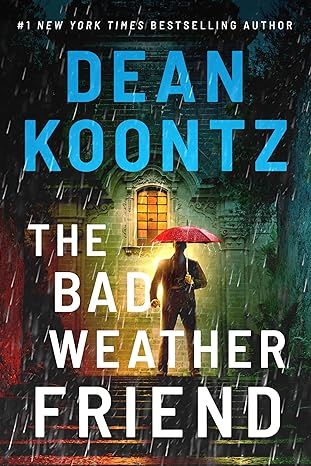
The Bad Weather Friend
4.1
-
34,750
$12.78

Pucking Around: A Why Choose Hockey Romance (Jacksonville Rays Hockey)
4.3
-
41,599
$14.84
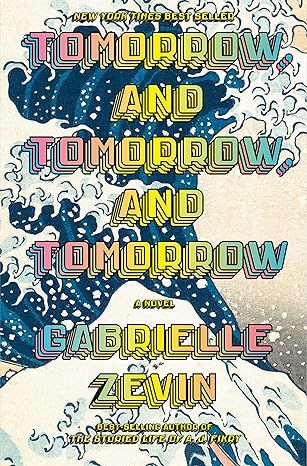
Tomorrow, and Tomorrow, and Tomorrow: A novel
4.4
-
95,875
$13.99

Weyward: A Novel
4.4
-
27,652
$11.99

Tom Lake: A Reese's Book Club Pick
4.3
-
37,302
$15.74

All the Sinners Bleed: A Novel
4.4
-
12,894
$13.55
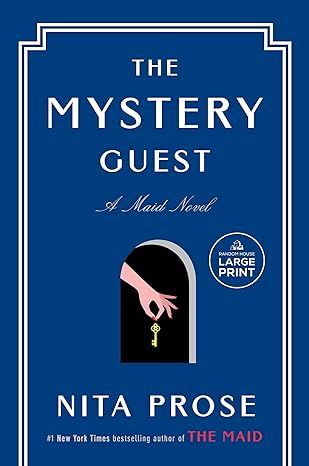
The Mystery Guest: A Maid Novel (Molly the Maid)
4.3
-
9,844
$14.99

Bright Young Women: A Novel
4.2
-
8,485
$14.99
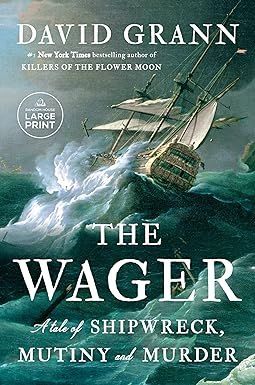
The Wager: A Tale of Shipwreck, Mutiny and Murder (Random House Large Print)
4.5
-
28,672
$14.99

Hello Beautiful (Oprah's Book Club): A Novel (Random House Large Print)
4.4
-
79,390
$14.99

Small Mercies: A Detective Mystery
4.5
-
16,923
$10.00

Holly
4.5
-
31,521
$14.99

The Covenant of Water (Oprah's Book Club)
4.6
-
69,712
$9.24
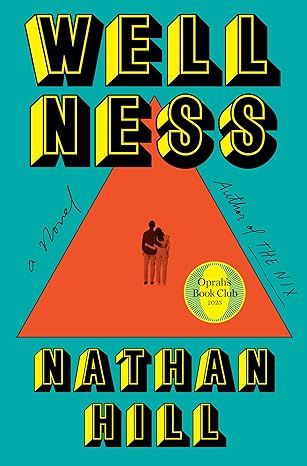
Wellness: A novel
4.1
-
3,708
$14.99
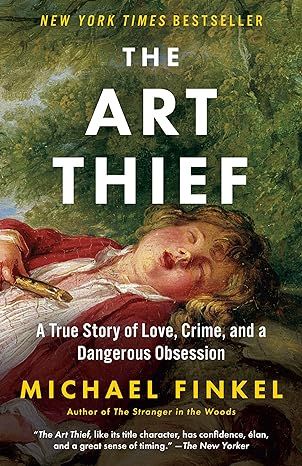
The Art Thief: A True Story of Love, Crime, and a Dangerous Obsession
4.3
-
4,805
$14.99

The Berry Pickers: A Novel
4.5
-
14,209
$14.99

Elon Musk
4.7
-
15,272
$16.99

Just for the Summer
4.6
-
19,524
$11.99

Fourth Wing (International Edition)
4.8
-
206,495
$7.95

Remarkably Bright Creatures: A Read with Jenna Pick
4.6
-
65,556
$15.80
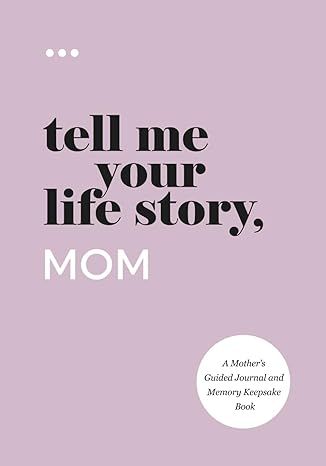
Tell Me Your Life Story, Mom: A Mother’s Guided Journal and Memory Keepsake Book (Tell Me Your Life Story® Series Books)
4.7
-
5,107
$11.24

The Mountain Is You: Transforming Self-Sabotage Into Self-Mastery
4.7
-
18,286
$9.99
